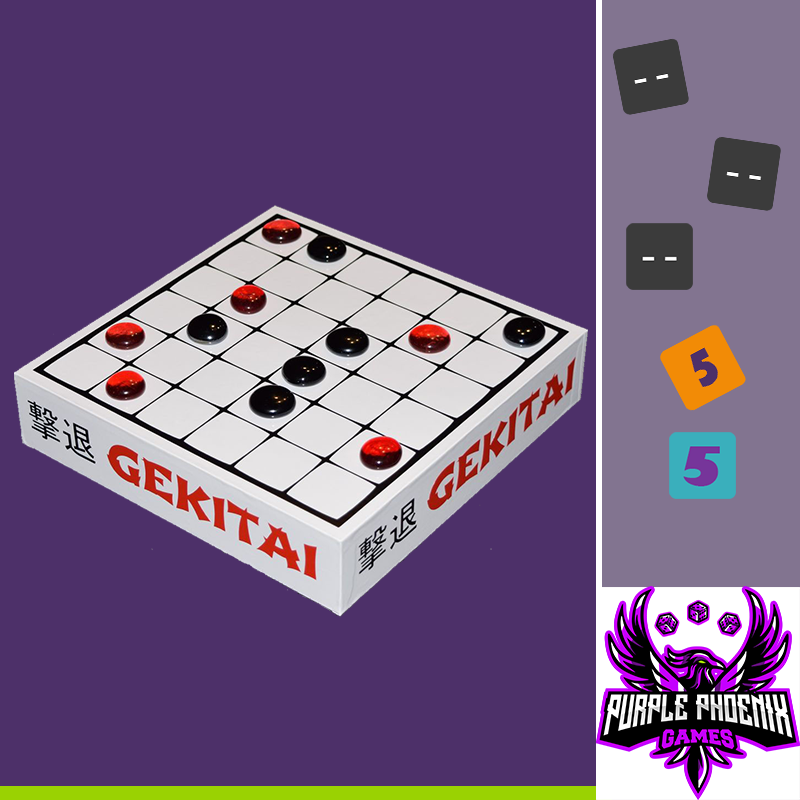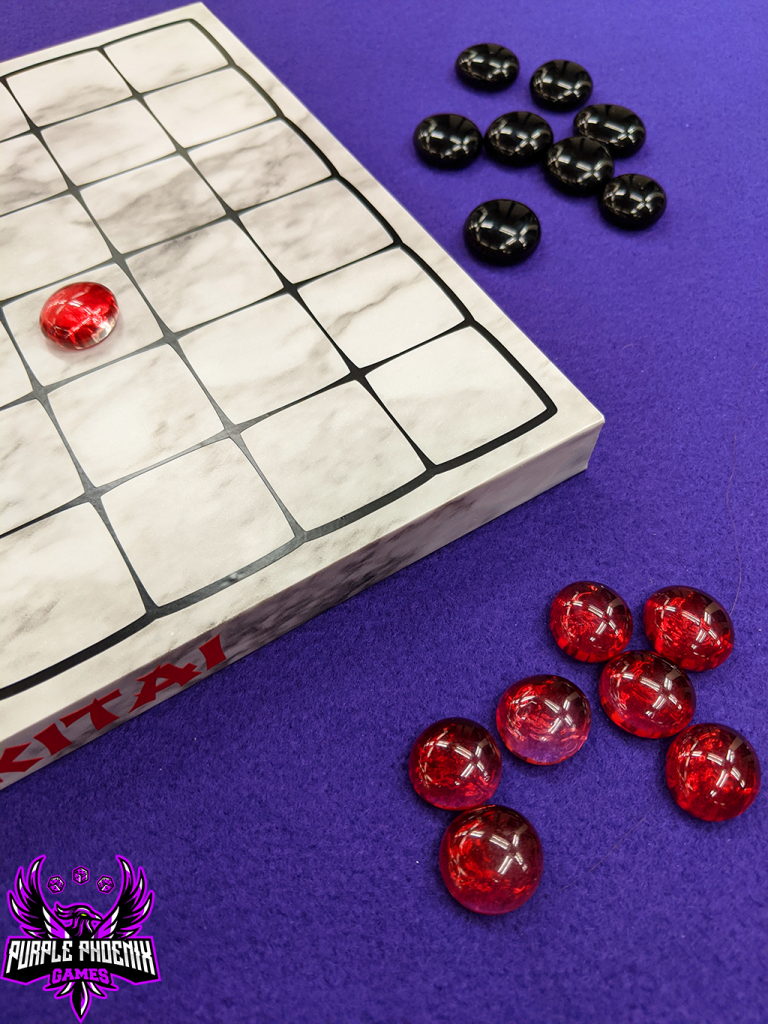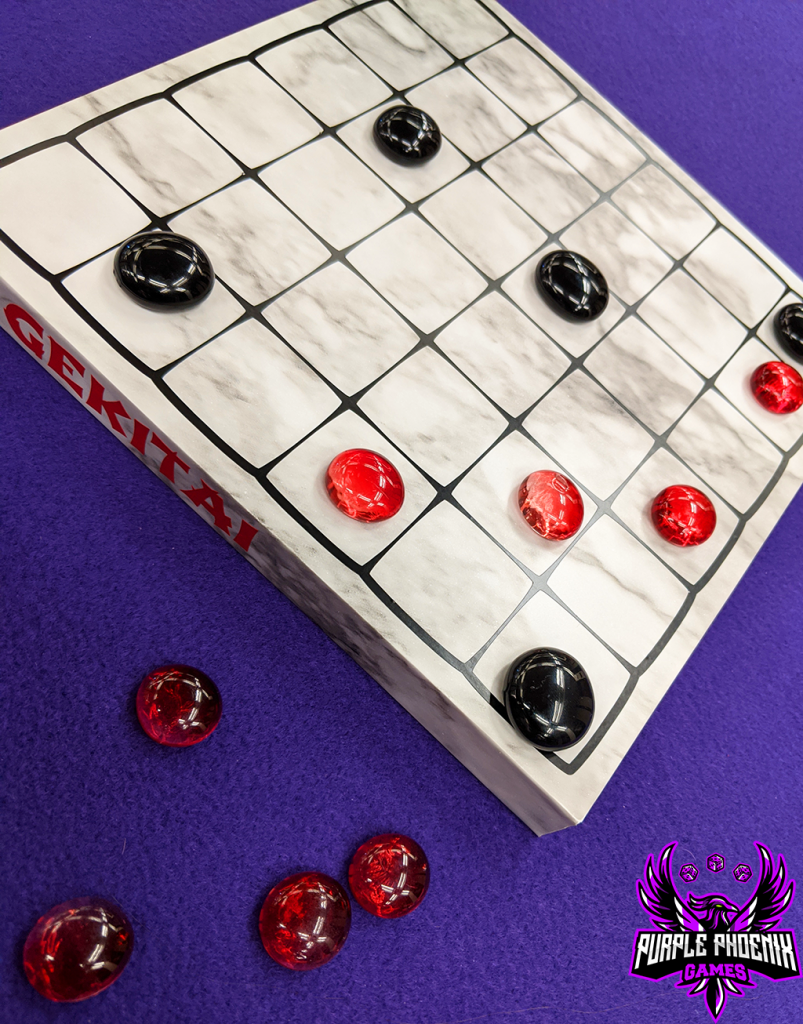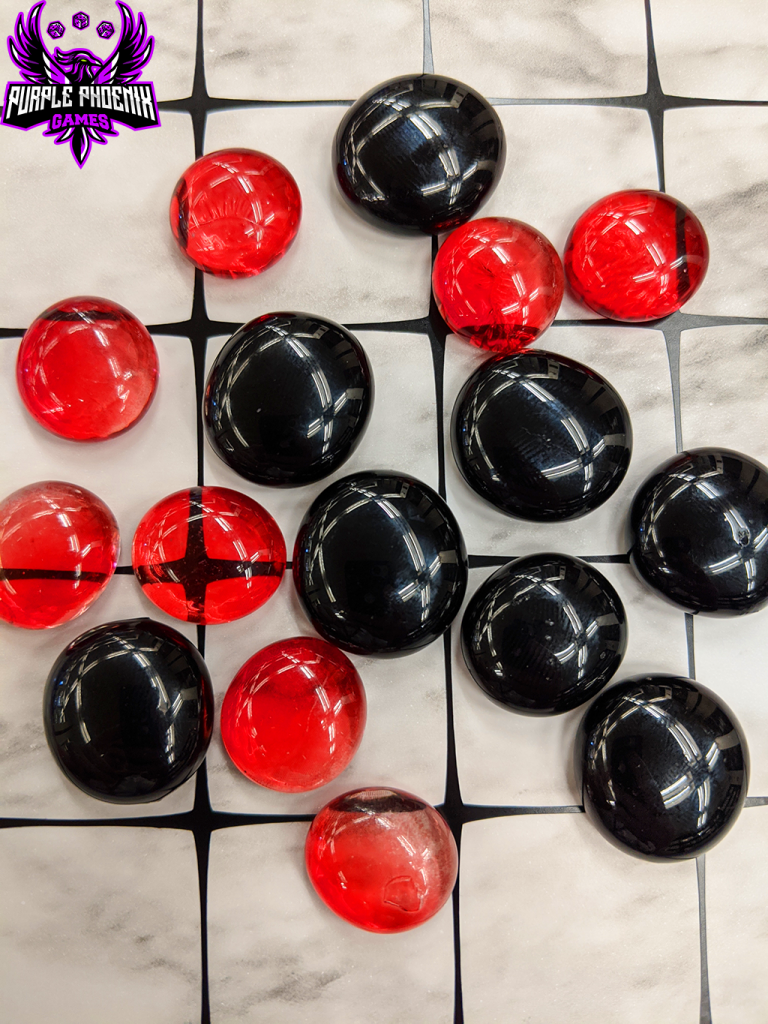
We have all played Chess, Checkers, Go, and even more recent abstracts like Azul, Patchwork, and Blokus, right? Most abstract strategy games are loosely themed, if themed at all, have perfect information, and offer very little luck factors. Furthermore, classic abstracts feature that familiar grid-board with moving pieces we all grew up learning with our grandparents. Right, we all have played and loved these. So when my friend posted PNP files online for his new game featuring a grid-board and pieces that move around it, I said, “Great. I just printed another PNP game and now I need to do another one!” But instead, the designer, Scott, messaged me and let me know he had a copy for me… which he hand-delivered to me at a high school concert I was attending. Then he taught it to me there.
| Gekitai (2020) | (self-published) |
| 2 Players | 5-20 minutes |
| Ages 8+ | BGG Weight – 1.00 / 5 |
Gekitai is an abstract strategy game with very minimal rules. The phrase, “easy to learn, but hard to master” is very overdone, but it certainly applies here. For those that are wondering, the term, “Gekitai” is Japanese for “Repel.” You will see why this nomenclature is perfect for this game soon.
DISCLAIMER: We were provided a prototype copy of this game for the purposes of this review. Though I know the designer personally, I will be reviewing this game as an impartial judge. -T
Normally I like to include setup instructions here in this paragraph for my reviews, so I shall do that now. To setup, place the board between the two players and give each player their eight matching pieces. In my game, they are red and black glass beads. For convenience I will refer to the red ones as apples and the black ones as 8-balls. That’s it. You’re setup to play.

The object of Gekitai is to fulfill one of two victory conditions: play until one player has three of their pieces in a row (diagonally OR orthogonally) or finish their turn with all eight of their pieces on the board. Easy, right? It most certainly is! Oh, you want the catch? Ok then, here’s the catch: while players can place any piece on any empty square, once placed the pieces will repel all other adjacent pieces away from itself. This includes their own pieces.
So let’s say you start the game and place your first 8-ball in a corner closest to you. Great opening noob. I mean move. You see, I would just place one of my apples adjacent to your 8-ball and repel it right off the board. That doesn’t mean that I have captured your 8-ball or anything like that. You would be able to use it again next turn if you like, but this is the danger of outside spaces. When repelled, a piece (your 8-ball) continues one space in the direction away from the most recently-placed piece (my apple). So diagonally if diagonal from the just-placed apple, or orthogonally otherwise. Again, this would affect all pieces that are adjacent, not just your opponent’s. Think of placing a piece as someone doing a cannonball in an infinity pool. Everyone already in the pool will get pushed away from the point of impact and may even fall out of the pool, but be able to hop back in soon.
One note about pushing other pieces. One piece can only push one other piece. Here’s what I mean. When my apple is placed near another 8-ball or apple, it repels it, right? Well, a piece may only be repelled if there is an empty space for it to go. If another apple is blocking the pathway of an affected apple or 8-ball, no movement happens. The pieces has been blocked. In this way strategy plays in integral part in Gekitai – you must always be thinking about 10 turns in the future. Play continues in this fashion until a player has achieved three-in-a-row or placed all of their pieces on the board.

Components. Again, we are playing with a PNP prototype game package. Granted, this PNP is assembled by the designer and looks WAAAY better than if I had tried to assemble it myself, so we do take that into consideration. Components aside (because unless you order a copy from the designer via Etsy in the future, you will probably download the files and play on a sheet of paper with coins or other stand-ins), this is a typical, classic abstract strategy-style game. The board can look any way you like in a 6×6 board and you can you use any bits for your game. Heck, you could even play with real apples and 8-balls. But what we were provided is excellent and looks great on the table.
But gameplay. Like I mentioned earlier, I know the designer and his family and they are wonderful people. Luckily that makes no difference here because the game itself is absolutely wonderful! My wife typically kicks my booty in all abstracts. Ok fine, usually in all games. BUT! After playing Gekitai lots with her, she has only beaten me once! When we do play it she asks for rematches several times over and I just love being able to have a go-to game for when we have a few minutes between running around with the kids. I love it. She loves it. We at Purple Phoenix Games, with an enthusiastic guest score from my wife, give Gekitai a cannonball-esque 10 / 12. Click this link to be taken to the BGG page where the PNP files can be printed. You will want this in your collection.

